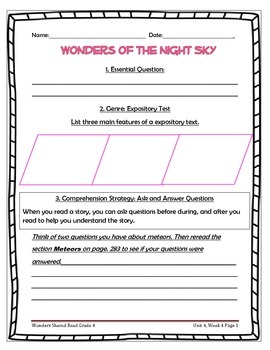Mcgraw-hill-night-study-guide-answers 2/7 Downloaded from datacenterdynamics.com.br on October 26, 2020 by guest contains over 800 practice questions and answers, essential calculations, and step-by-step troubleshooting tips for the job site. Written by two of the most experienced and successful authors in the HVAC field, this on-target book. Mcgraw Hill Companies Night Study Guide Answers If searched for a ebook Mcgraw hill companies night study guide answers in pdf format, in that case you come on to the faithful site. We furnish full variant of this ebook in DjVu, ePub, PDF, txt, doc forms. You may read Mcgraw hill companies night study guide answers online or load.
Author Elie Wiesel wrote Night (1960) about his experience that he and his family endured in the concentration camps during World War II between 1944 and 1945, primarily taking place the notorious camps of Auschwitz and Buchenwald. More than just about the horrific conditions that prisoners had to endure in the camp, Night is also an unnerving insight into the breakdown of humanity and followers’ loss of faith in God himself. Wiesel’s writing conveys the nightmare of darkness, indeed, a never-ending “night” from which the book derives its name, that the reader comes to understand as a metaphor for the holocaust itself. It is thus not just a book about the holocaust, but indeed the very nature of the human condition, imploring the reader to ask where civility and barbarism intersect, and we conceptually draw the line between humans and beasts. After being liberated at the age of 16 from Buchenwald by the United States Army, Wiesel moved to Paris. He completed an 862-page manuscript in Yiddish by the end of 1954 about all of his experiences during the holocaust. He then revised it to a 245 page edition entitled “And the World Remained Silent” which was published in Argentina. The most famous version that we know today by the title “Night” was published in French as “La Nuit.” Little known to many is that Night is actually the first of a trilogy, followed by Dawn and Day, which is said to convey both a Jewish folkloric practice of beginning day at nightfall, and also conveys Wiesel’s own transition in life post holocaust. The book has since been translated into 30 different languages, and is often thought of as a keystone of holocaust literature.

Night Study Guide Answers Chapter 3
Author Elie Wiesel wrote Night (1960) about his experience that he and his family endured in the concentration camps during World War II between 1944 and 1945, primarily taking place the notorious camps of Auschwitz and Buchenwald. More than just about the horrific conditions that prisoners had to endure in the camp, Night is also an unnerving insight into the breakdown of humanity and followers’ loss of faith in God himself. Wiesel’s writing conveys the nightmare of darkness, indeed, a never-ending “night” from which the book derives its name, that the reader comes to understand as a metaphor for the holocaust itself. It is thus not just a book about the holocaust, but indeed the very nature of the human condition, imploring the reader to ask where civility and barbarism intersect, and we conceptually draw the line between humans and beasts. After being liberated at the age of 16 from Buchenwald by the United States Army, Wiesel moved to Paris. He completed an 862-page manuscript in Yiddish by the end of 1954 about all of his experiences during the holocaust. He then revised it to a 245 page edition entitled “And the World Remained Silent” which was published in Argentina. The most famous version that we know today by the title “Night” was published in French as “La Nuit.” Little known to many is that Night is actually the first of a trilogy, followed by Dawn and Day, which is said to convey both a Jewish folkloric practice of beginning day at nightfall, and also conveys Wiesel’s own transition in life post holocaust. The book has since been translated into 30 different languages, and is often thought of as a keystone of holocaust literature.